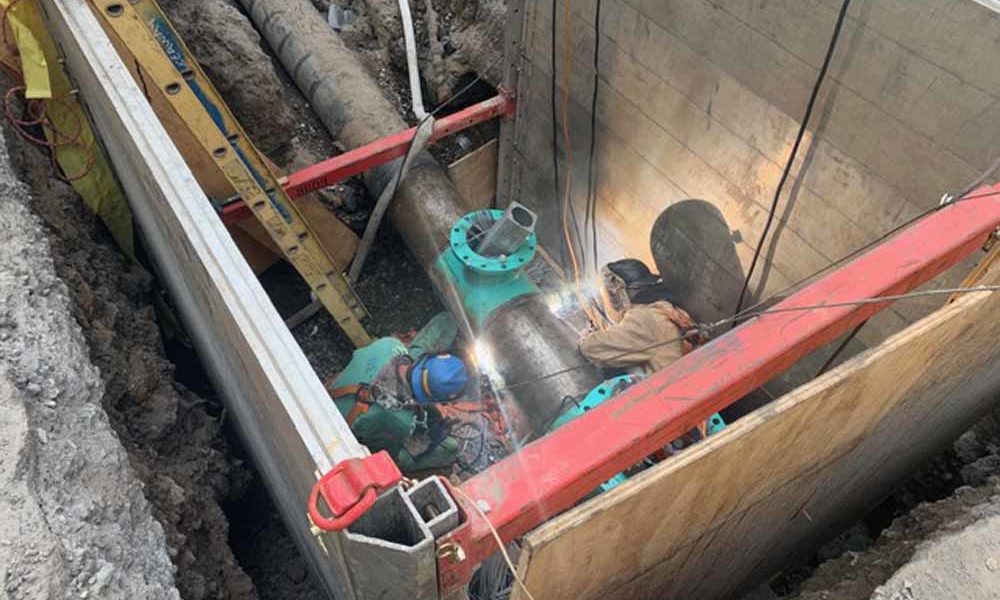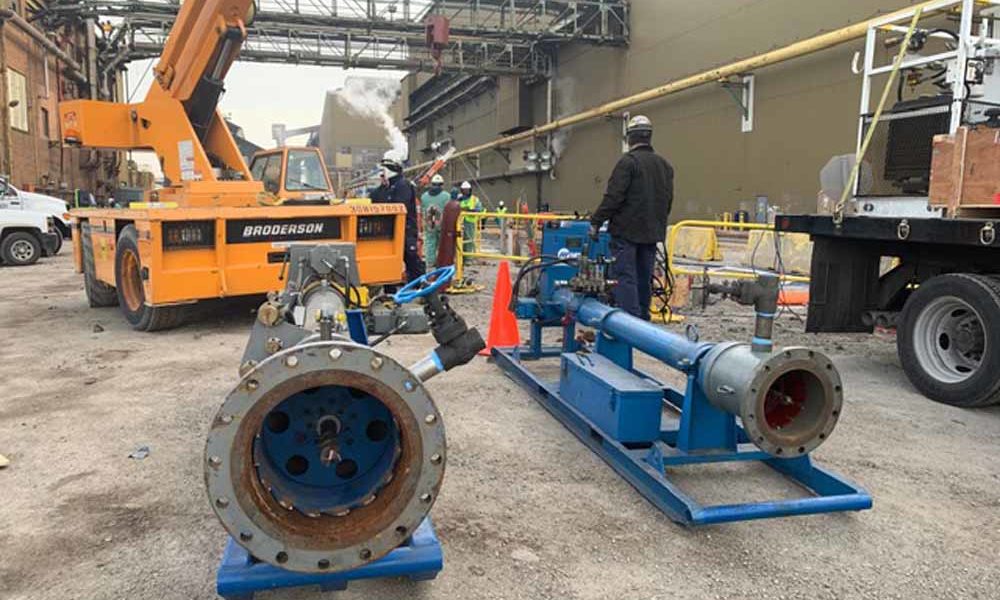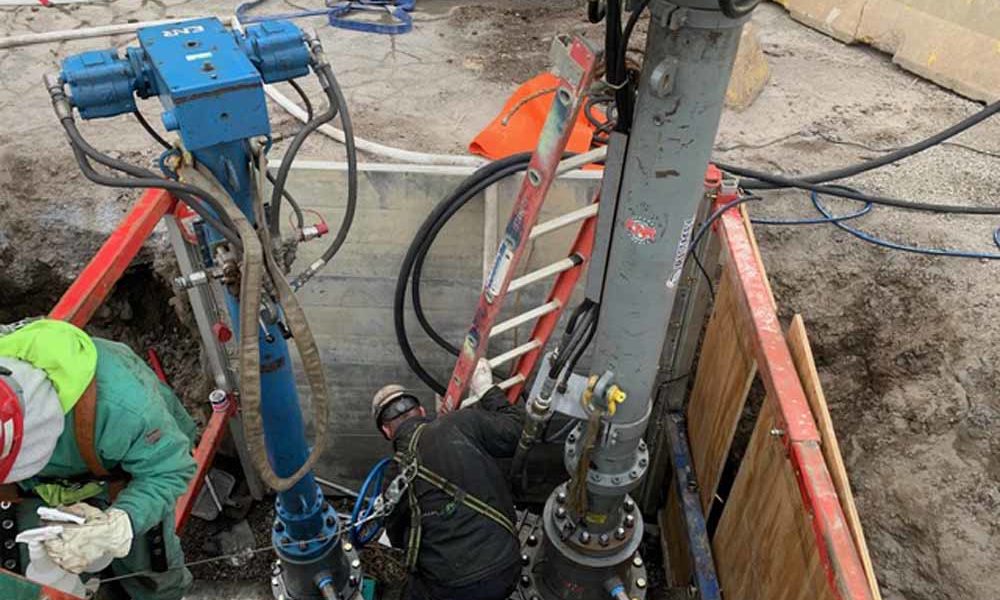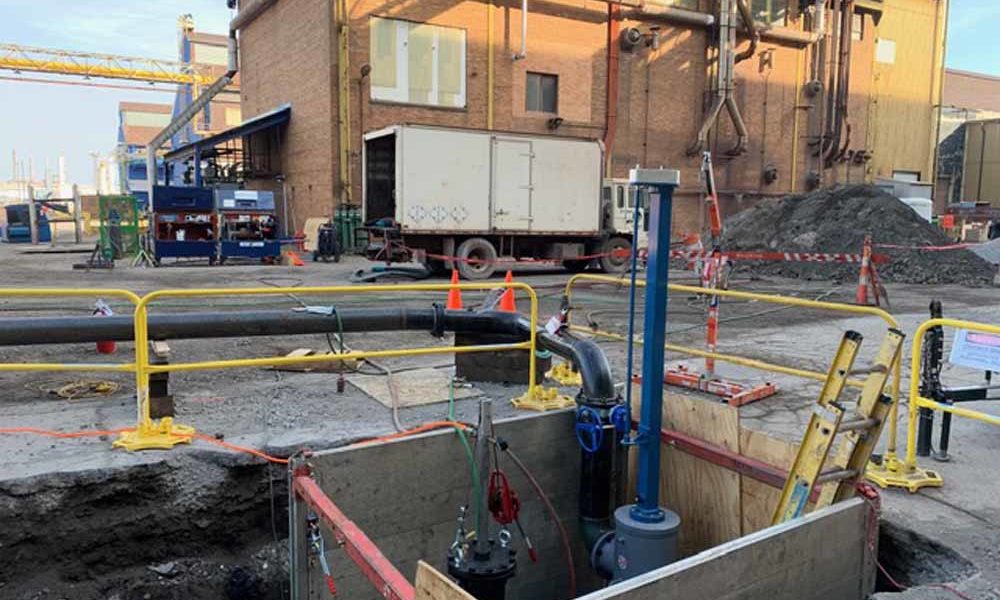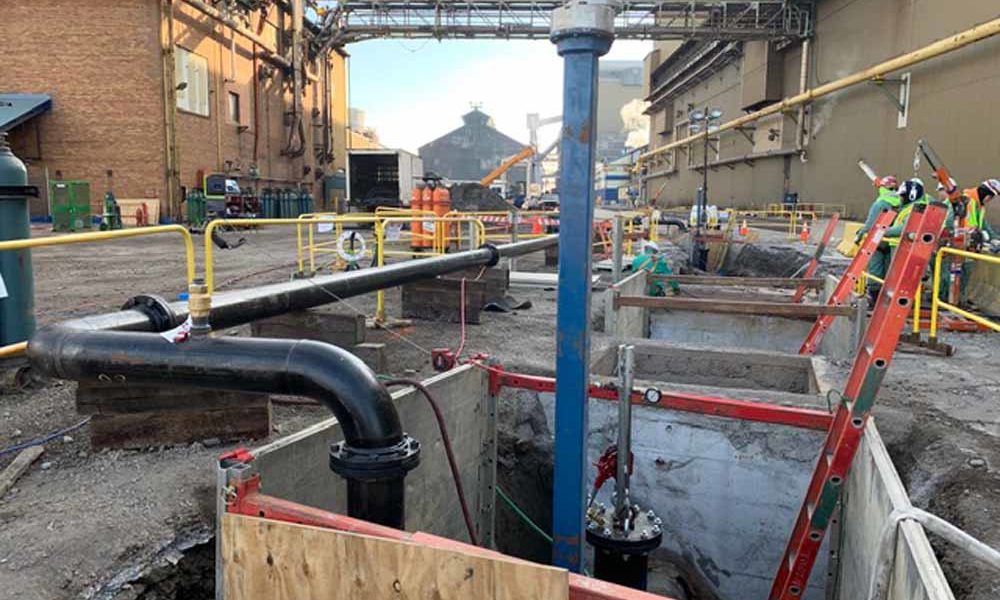Place:
Midwest Steel Mill
Challenge:
An 8” natural gas main operating at 95psi that fed an abandoned part of the plant was leaking in several places underground. Plant utilities had attempted to isolate by closing an 8” valve and the shaft snapped, now they needed a way to isolate and replace the 8” valve. The job was highly time-sensitive as the dangerous gas leaks downstream were still live. Adding to the challenge was that the 8” valve only had a few inches of pipe stub coming off of a 16” main. Turning off the 16” main was not desirable due to the fact it would isolate the entire mill. A linestop of only the 8” upstream of the bad valve was not possible as there were only a few inches of 8” pipe to work with.
Solution:
RJ Stacey and plant engineering developed a plan to perform a linestop of the 16” main at the location of the 8” branch connection. This plan met several requirements from both safety, and operations departments.
- RJ Stacey provided an internal bypass around the linestops so plant services would never lose gas pressure by the isolation 16” pipe segment.
- RJ Stacey provided a double block and bleed on both sides of the segment to be isolated. (4 stops total) to provide for weld crew safety.
- RJ Stacey utilized a combination of linestop tooling into one job. This included robust high pressure “bulletproof” pivot head’s as the primary stops and hot tap insertable bladder’s which act extremely effectively as a vapor barrier as the secondary stops.
- RJ Stacey performed several small-bore hot taps of the system to allow safe blowdown of trapped gas between the stops as well as nitrogen inerting. Once an effective linestop was proven and gas readings taken hot work began.
- Upon completion and in-service testing of all new piping and valves, RJ Stacey equipment was removed putting 16” main back in service, completion plugs were set and entire area reburied.
Results/Benefits:
The result was a 100% effective isolation of the bad pipeline segment, while all piping and systems were kept live both upstream AND downstream of the repairs. The bypass piping was sized by plant engineering and was sufficient to run all downstream operations while needed repairs were completed to stop the dangerous gas leaks. The expedited manner of the repairs was a significant improvement for plant safety.

